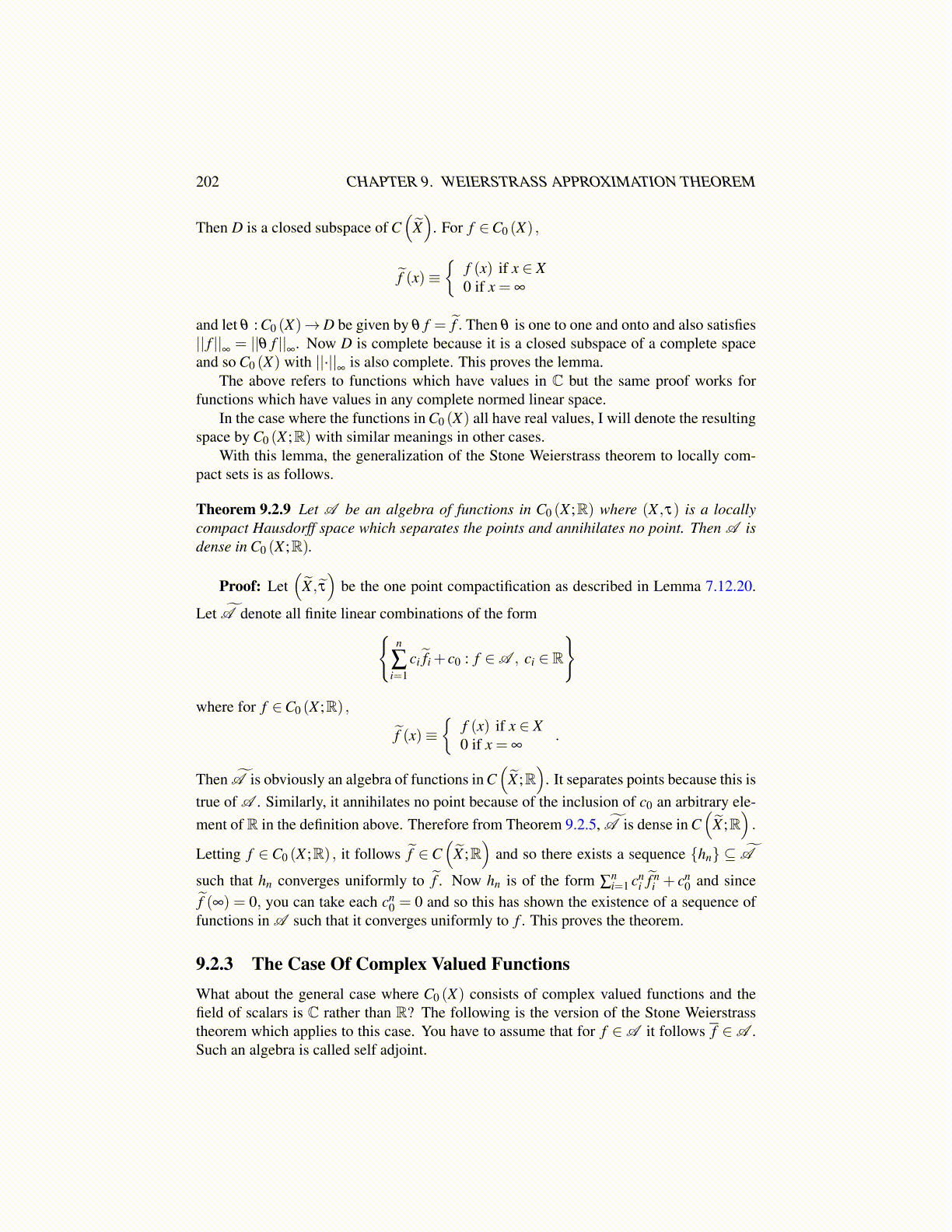
202 CHAPTER 9. WEIERSTRASS APPROXIMATION THEOREM
Then D is a closed subspace of C(
X̃)
. For f ∈C0 (X) ,
f̃ (x)≡{
f (x) if x ∈ X0 if x = ∞
and let θ : C0 (X)→D be given by θ f = f̃ . Then θ is one to one and onto and also satisfies|| f ||
∞= ||θ f ||
∞. Now D is complete because it is a closed subspace of a complete space
and so C0 (X) with ||·||∞
is also complete. This proves the lemma.The above refers to functions which have values in C but the same proof works for
functions which have values in any complete normed linear space.In the case where the functions in C0 (X) all have real values, I will denote the resulting
space by C0 (X ;R) with similar meanings in other cases.With this lemma, the generalization of the Stone Weierstrass theorem to locally com-
pact sets is as follows.
Theorem 9.2.9 Let A be an algebra of functions in C0 (X ;R) where (X ,τ) is a locallycompact Hausdorff space which separates the points and annihilates no point. Then A isdense in C0 (X ;R).
Proof: Let(
X̃ , τ̃)
be the one point compactification as described in Lemma 7.12.20.
Let à denote all finite linear combinations of the form{n
∑i=1
ci f̃i + c0 : f ∈A , ci ∈ R
}
where for f ∈C0 (X ;R) ,
f̃ (x)≡{
f (x) if x ∈ X0 if x = ∞
.
Then à is obviously an algebra of functions in C(
X̃ ;R)
. It separates points because this istrue of A . Similarly, it annihilates no point because of the inclusion of c0 an arbitrary ele-ment of R in the definition above. Therefore from Theorem 9.2.5, Ã is dense in C
(X̃ ;R
).
Letting f ∈ C0 (X ;R) , it follows f̃ ∈ C(
X̃ ;R)
and so there exists a sequence {hn} ⊆ Ã
such that hn converges uniformly to f̃ . Now hn is of the form ∑ni=1 cn
i f̃ ni + cn
0 and sincef̃ (∞) = 0, you can take each cn
0 = 0 and so this has shown the existence of a sequence offunctions in A such that it converges uniformly to f . This proves the theorem.
9.2.3 The Case Of Complex Valued FunctionsWhat about the general case where C0 (X) consists of complex valued functions and thefield of scalars is C rather than R? The following is the version of the Stone Weierstrasstheorem which applies to this case. You have to assume that for f ∈A it follows f ∈A .Such an algebra is called self adjoint.